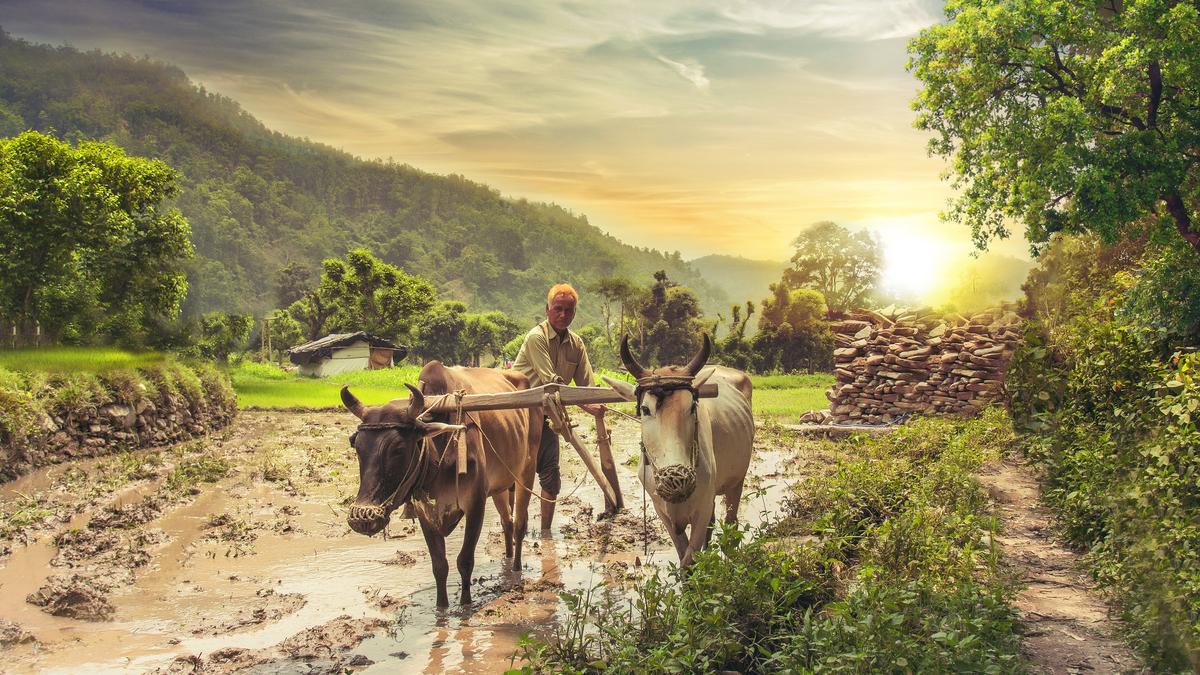Domestication of animals marked a significant milestone in human progress.
| Photo Credit: Getty Images/iStockphoto
The domestication of animals marked a significant milestone in human progress. Since the dawn of civilisation, animals have played a crucial role in humankind’s survival. Previously, humans relied on consuming wild vegetation and animals for sustenance, making them an essential source of food. The Neolithic revolution heralded a new era in human history. Agriculture became central to human societies, and to support it, humans needed reliable animals. This need was met with the domestication of animals, notably the bull, which became indispensable for tasks such as ploughing fields and transporting goods, shaping the course of civilisation.
The bull is frequently connected to fertility and abundance in Indian mythology. The bull is associated with Lord Shiva and is symbolic of a thriving agricultural community. The bull-like form of Lord Shiva’s mount, Nandi, represents fertility and bountiful agriculture. It appears in a variety of media, including paintings, sculptures, and even banknotes. The bull figures, which stand for the might and authority of the gods and monarchs, are frequently seen in temples, palaces, and other significant structures. The bull’s majestic presence never ceases to inspire and awe visitors, from the Ashoka Pillar to the Brihadeeswara Temple. They continue to be an essential component of India’s rich cultural past, serving as a constant reminder of the mythology and artistic traditions of the nation.
During the Vedic period, farmers used pairs of oxen to plough the fields. Even the Rig Veda mentions using 24 oxen when ploughing the land. Bull was the symbol of Rishabadeva or Rishabhanatha, the first Tirthankara (supreme preacher) of Jainism. The animal symbolism in Buddhist tradition, such as the bull, can be traced back to an ancient Mesopotamian society. The bull, which represents earthly fertility and emotions, plays an important position in Buddhism as the patron of discipline and ascetic practices. It is the genuine progenitor of yoga, expressing a revolutionary concept through its attachment to the earth via a yoke. This subordination allows the bull to use its power to produce sustenance, building a revolutionary path.
The earliest evidence of plough comes from Mesopotamian cylinder seal at Ur and Egyptian paintings going back to rather before 3000 BC. It is interesting to know that in many of the older civilisations the origin of the plough is attributed to a god of some legendary character. In India, plough is ascribed to Balarama. In one of the verses of Nilamatapurana, Baladeva is said to have broken forth the Himalayas with the plough. The bull played an important rule in ploughing fields, helping in increasing agricultural production.
The bull has a long history in Kashmir, deeply intertwined with the region’s agricultural practices and cultural heritage. In Kashmir, oxen have been used for centuries as draught animals, helping farmers plough fields and transport goods. Their strong and sturdy build made them well suited to the rugged terrain and harsh weather conditions of the region.
The domestication of animals, particularly the bull, has profoundly shaped human civilization, from aiding in agricultural practices to embodying cultural and religious symbolism. In regions like Kashmir, where oxen played a crucial role in farming, their significance extended beyond practical use, influencing social dynamics and traditions. The practice of ploughing, guided by cultural rituals and partnerships, not only sustained livelihoods but also fostered community bonds. Despite technological advancements, the enduring legacy of oxen in agriculture underscores their enduring importance in human history and heritage.
hilalmohiuddin614@gmail.com
